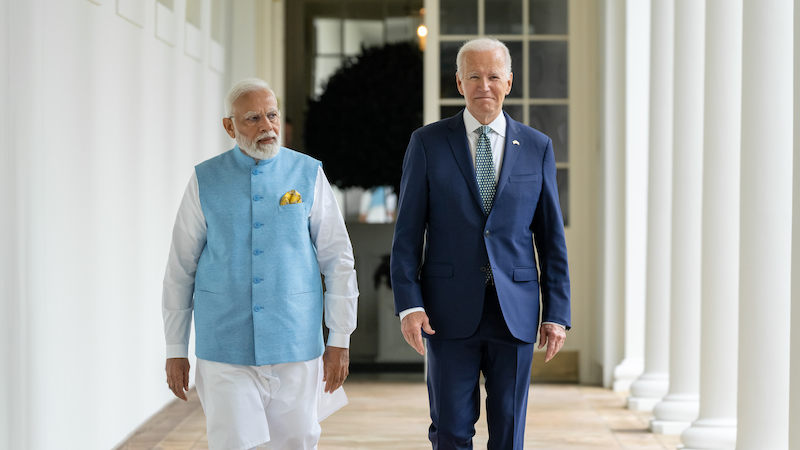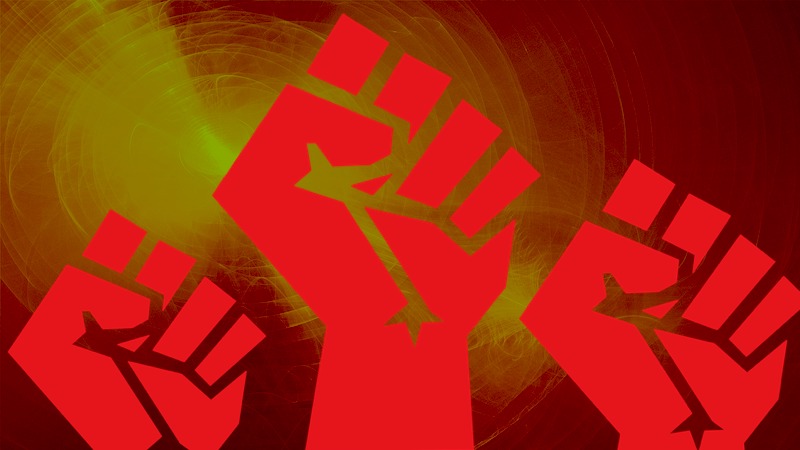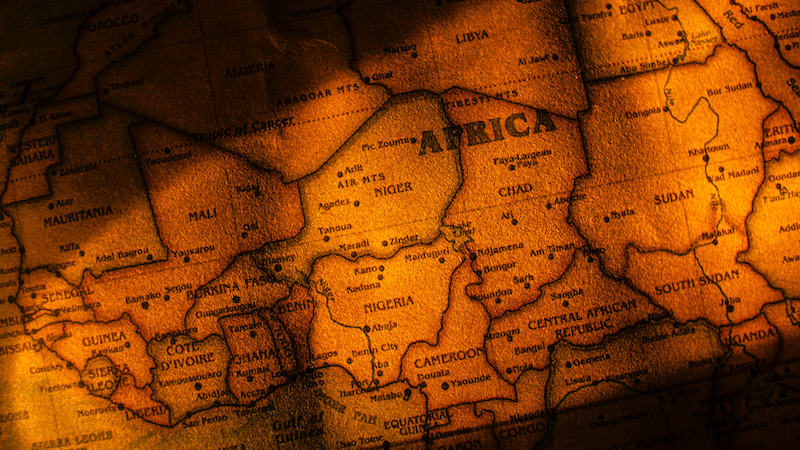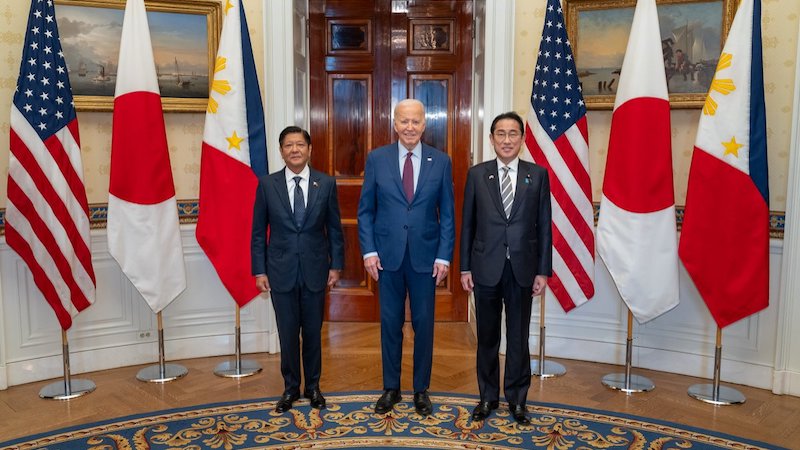
The US president Joe Biden has deputed his trouble shooter National Security Advisor Jake Sullivan to travel to New Delhi no sooner than Prime Minister Narendra Modi forms his new government.;
The White House said in a;readout;that Sullivan plans “to engage the new [Indian] government on shared U.S.-India priorities, including the trusted, strategic technology partnership.”;
Of course, “strategic technology partnership” is a code word. Simply put, with the elections over and another term under Modi’s leadership assured, the integration of India into the Biden administration’s Asia-Pacific strategy will be accelerated where much has changed in the US’ favour in terms of the alignment of forces during the past six-month period with the Biden administration making significant inroads into the ASEAN and a new ecosystem of network and alliances overlapping and supplementing each other is being put in place to prepare for the unavoidable confrontation with China that lies ahead in which New Delhi under Modi’s leadership is an indispensable — and in many ways an irreplaceable — partner.;;
That said, it is predictable that Sullivan will keenly explore the positioning of New Delhi in the;tumultuous developments lately;in the confrontation between the US and Russia. He will take the pulse of the Indian ruling elite and estimate how much their fiery nationalist rhetoric is real, delusional or make-believe.;
The stakes couldn’t be any higher. Only this week, Biden made an explosive remark ruling out a US missile attack on Moscow and the Kremlin and Russian President Vladimir Putin retorted that Russia too has an option to arm the actors elsewhere who are locked in mortal combat with the US and its allies.
Strongman politics has no place;;
Specifically, India has become a mainstay of the Russian economy due to its;massive purchase of Russian oil. That is not in the US interests — although it helps keep oil prices “low”. India’s Bank of Baroda reported that the country’s imports of Russian oil soared tenfold in 2023.;Russia has successfully weathered the EU embargo on Russian seaborne oil and the West’s price cap by rerouting most of its energy exports to Asia – particularly to India and China. According to the Russian Finance Ministry, income from energy exports between January and April soared by 50% compared to the same period in 2023.
Reuters reported;that last month, India’s largest private corporation Reliance Industries and the Russian company Rosneft signed a one-year contract for monthly supplies of up to three million barrels of oil that will be paid for in rubles.
Sullivan will take a close look at this deal since cross-border settlements in local currency undercuts the West’s attempts to cut off Russia’s access to its financial system while promoting “de-dollarisation.” The US aims to use India as a “braking mechanism” within BRICS.;
The recent parliamentary election has been a big setback for the ruling BJP and Modi personally. However, across the board, there is a sense of elation in the;western commentaries, which estimate that the election has diminished Modi’s “stature as an elected strongman with a mission from God.”;
An expert opinion at the influential Council for Foreign Relations in New York noted that Modi will be leading a “fragile coalition” and will be facing daunting economic and social issues that have no easy solution. Make no mistake, Sullivan will thoroughly explore how a weakened Modi can still serve US interests.;It is not a mission that state;secretary Antony Blinken can preform.
The;Cfr commentary;concluded that “Another challenge relates to India’s foreign relations. Modi and the BJP have massively traded on his reputation of popularity and his credentials as a devout Hindu nationalist with a new vision for India. Both of these have now received a setback… there is little doubt that Modi’s stature of invincibility as a leader of a rising power and a community of Global South nations with a large mandate has been diminished abroad.”;;
To be sure, Sullivan will look for all emergent opportunities to navigate US interests from a position of strength. The US traditionally abhors “strongman” politics, especially in the Global South. From such a perspective, Sullivan can be trusted to assess the advantages that may now be opening up for smart diplomacy.;
Without doubt, India’s Russia ties will be listed somewhere at the top of his talking points. But there are other pressure points too, which the Biden administration had developed during the past several months, especially the Modi government’s alleged assassination plots in North America.
Even as the election results were heading the news cycle in India, Canada’s National Security and Intelligence Committee of Parliamentarians, comprising members with top security clearances,;unveiled a report;alleging that “India has become the second-most significant foreign interference threat to Canada’s democratic institutions and processes, replacing Russia… These efforts include intervention in Canadian democratic systems and institutions, including targeting Canadian politicians, ethnic media, and the Indo-Canadian ethnocultural communities.”;
Sullivan is just what the doctor would prescribe to correct abhorrent erratic behaviour by the US’ partners. There is no question that the US expects the Modi government to have a national security apparatus that is accessible, cooperative and transparent.;;
Return of the natural ally;;
Herein lies a paradox. For, at the end of the day, the election result may hold the potential to do good for the US-Indian working relationship. Consider the following.;
The election is living proof that India remains a vibrant democracy and, therefore, has much in common with the liberal democratic world — something that the western media is unwilling to acknowledge. As an;opinion piece;in the Hill newspaper put it,;
“The result of India’s latest elections is in some ways a reminder of how democracies can successfully apply self-correction mechanisms. In addition to concerns about over implementing BJP’s Hindutva ideology, which equates Indianness with Hinduism, some observers were worried about the prospect of authoritarianism in India.”;
Secondly, in a curious way, the human rights situation in India may ;improve, democratic norms such as free press may revive and, most important, the anti-Muslim state policies may get mothballed under a coalition government that reverts to consensual politics for sheer survival and also faces a strong opposition in the parliament.
Indeed, despite Modi’s best efforts to debunk Rahul Gandhi, the latter is now a serious contender for power waiting in the wings — and Modi would know he is well-liked in the West as an erudite mind with a cosmopolitan outlook suffused with humanism and compassion for the dispossessed and marginalised millions of Indians.;
All this restores the political balance in New Delhi after a decade, with the Congress in a position to insistently question the government’s policies and the ruling BJP obliged to be accountable. The BJP’s hubris has no place in the scheme of things ahead.;
Equally, the reassertion of regional parties highlights India’s ethnic diversity. Thus, the rhetoric of ethno-nationalism though the past decade, which;;pitched India’s Hindu majority against the country’s Muslim minority and helped the BJP in the previous two general elections, cannot have a free run anymore with tacit state support.;
Indeed, people’s primary concerns are about economic distress, and the limits of religious identity as a basis for voters’ choices have been reached. India cannot and will not be a Hindu Rashtra.;
Suffice to say, a major concern of the western world — that India was lurching toward ethno-nationalism and falling victim to its attendant dangers of militancy and extremism and authoritarianism — is dissipating. This will help the US-Indian discourses to regain their elan.;
In the final analysis, Biden’s decision to rush his hatchet man to New Delhi right at the birth of the new government only goes to show how much the US wants India to get back on track as its natural ally. As the saying goes, the early bird gets the worm.;;
For the Biden administration, Modi has been the most “pro-American” leader that India ever had and it has been a dream team on Raisina hill with the External Affairs portfolio held by S. Jaishankar who is trusted by the Americans and whose heart is in the right place when it comes to India’s strategic alignment to the US, all his grandstanding as the role model of an unvarnished nationalist notwithstanding.;
To be sure, the US will do all that is possible and necessary to shore up the stability of another “Modi government.” It has been a decisive influencer in Indian politics and it will not hesitate to be proactive. And, above all, it has excellent rapport with the Sangh Parivar circles in the US, who are wired into the powers that be in India.;
Biden’s hands-on role;
Make no mistake that Biden will take a hands-on role in the relaunch of the US-Indian odyssey once his preoccupations over his own re-election bid gets over. Nikkei Asia, FT’s sister publication, has reported quoting Mira Rapp-Hooper, Special Assistant to the President and Senior Director for East Asia and Oceania at the White House National Security Council, that Biden plans to attend the summit of the QUAD in New Delhi after the US presidential election in November.;
“The preparatory work for … the [QUAD] leaders’ summit is well underway… And we are very confident that we will have really substantial deliverables that continue to build upon the QUAD’s mission,” she revealed.
In every respect, the signal that Sullivan’s visit will convey — not only to the Indian audience but also to the US’ adversaries in the epochal struggle looming ahead for the world order and the international system — is unmistakably that the Biden administration attaches the highest importance to forging a strong and enduring alliance with India.
To that end, Washington is willing to strengthen Modi’s hands in steering through choppy waters what seems a shaky coalition government setting out on an uncertain voyage — provided, of course, the Indian side also keeps its side of the bargain.;



